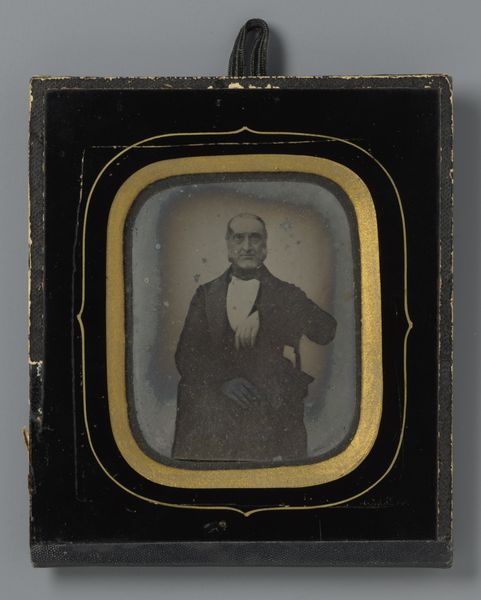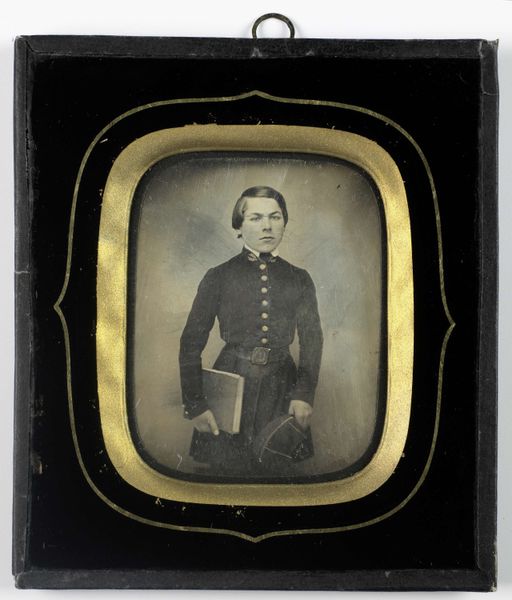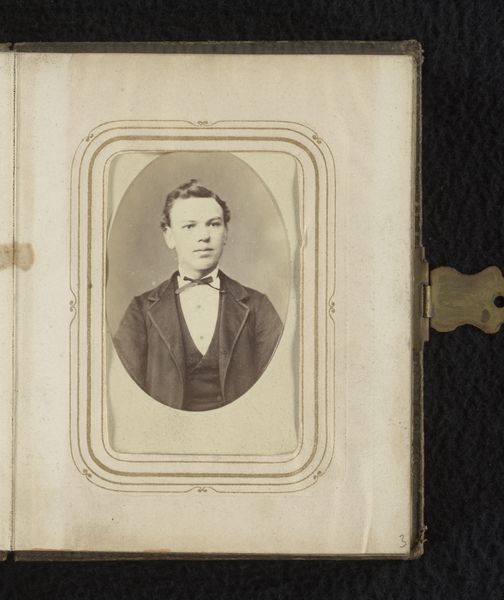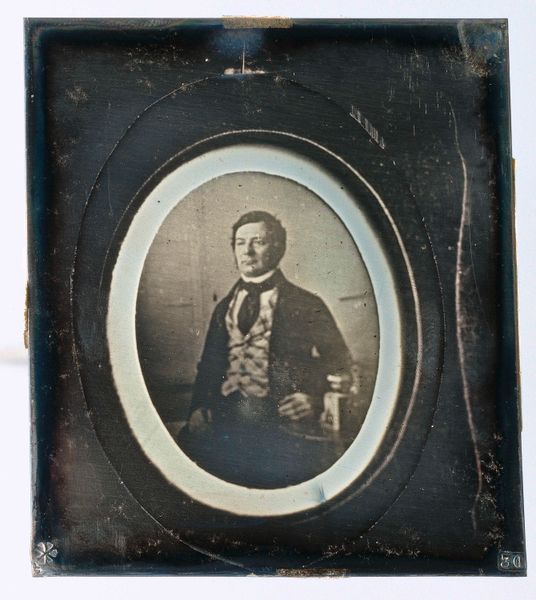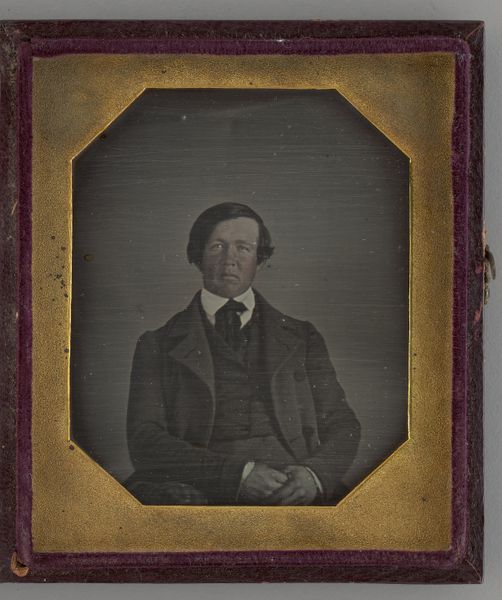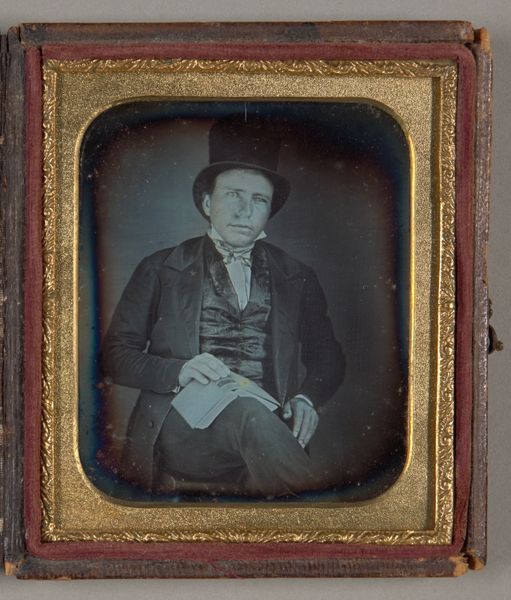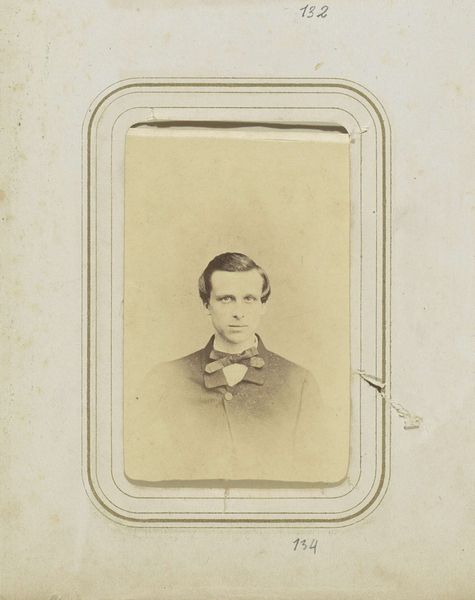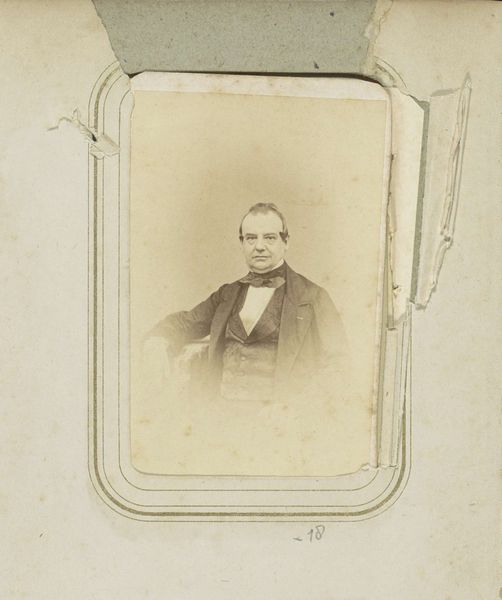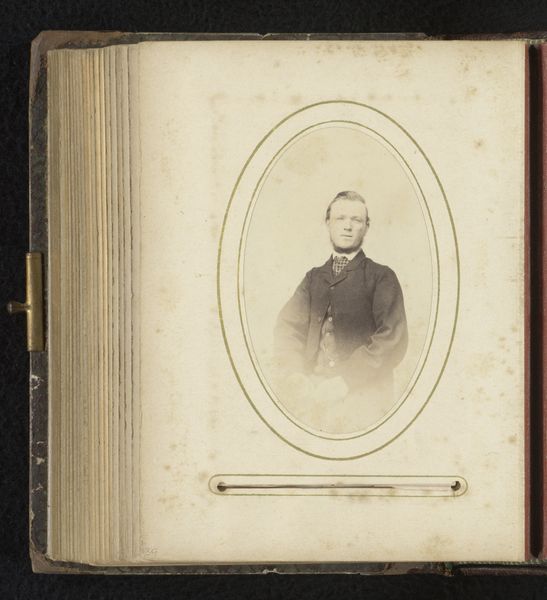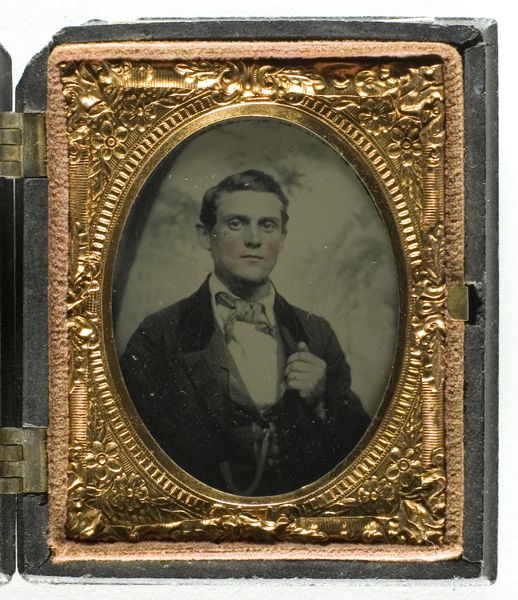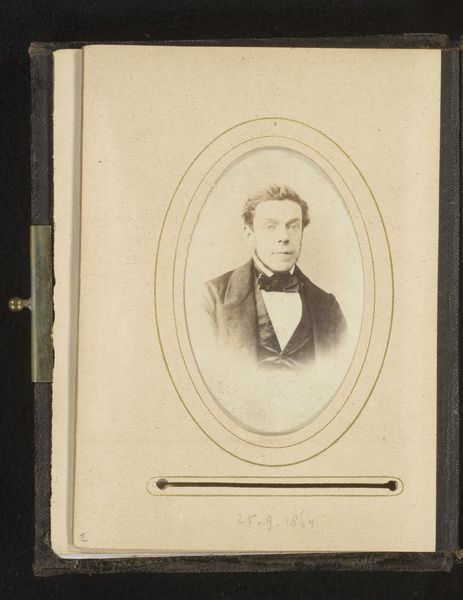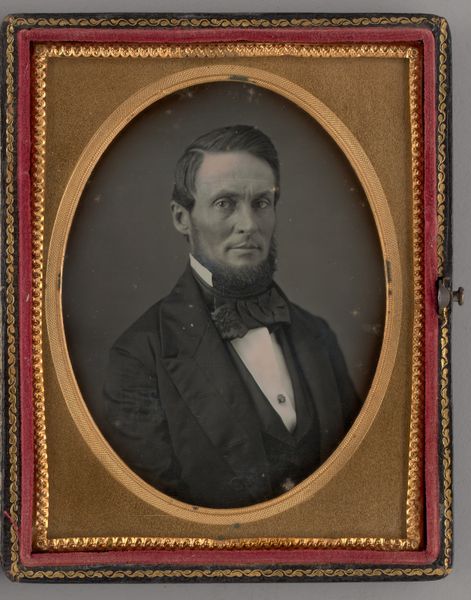
daguerreotype, photography
#
portrait
#
daguerreotype
#
photography
#
realism
Dimensions: height 72 mm, width 56 mm, height 127 mm, width 110 mm, thickness 4 mm
Copyright: Rijks Museum: Open Domain
Curator: Here we have "Portret van een onbekende man met bril," or "Portrait of an Unknown Man with Glasses," created in 1853. This captivating image is a daguerreotype, a very early photographic process. Editor: What strikes me is the sheer stillness and formality, especially emphasized by the restricted grayscale. The light describes the gentleman’s face with resolute angles. There’s a certain intensity. Curator: Precisely. Daguerreotypes required long exposure times, necessitating the sitter's immobility. Consider the social context—the rising middle class sought ways to commemorate themselves, and photography offered an accessible, albeit stiff, alternative to painted portraits previously reserved for the elite. The gaze he gives us isn’t something an upper class portrait would suggest; instead, it reflects on new aspirations and expectations. Editor: And the composition itself emphasizes the face as a series of precise lines: spectacles perched precisely on his nose, the clipped angles of the clothing. Even the framing contributes to the geometric sensibility. The dark mount functions to seal this intensity off into a contained experience. Curator: This aesthetic of control reflected societal norms, of course. There was huge emphasis on self-presentation, with dark clothing and carefully maintained appearances. Editor: It is as if the photographic process—the very physics of capturing light and shadow—became an ideal for representing rational thought and ordered lives. And I can’t overlook how modern he seems, for a person who lived that long ago, looking at us directly. Curator: His modern feeling underscores the impact photography had on visualizing and shaping public identity in the 19th century. Suddenly, you could represent yourself as a ‘real’ person. What it suggests is so new. Editor: True enough! Thinking about light and the starkly resolute presentation… it leaves you wondering about the person, what kind of character he had behind that dark jacket. Curator: Yes, but even with the air of realism it seems a window into not just a single man, but an entire rising class and its aspirations.
Comments
No comments
Be the first to comment and join the conversation on the ultimate creative platform.

